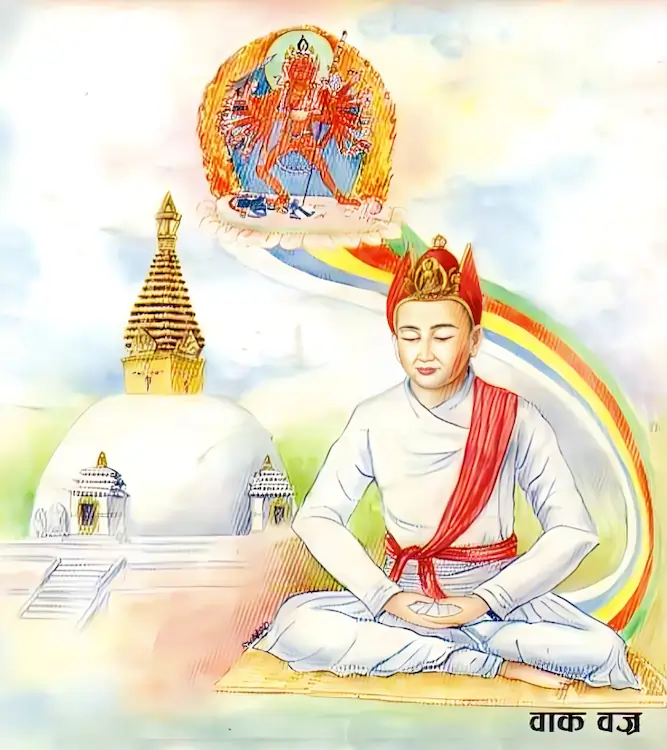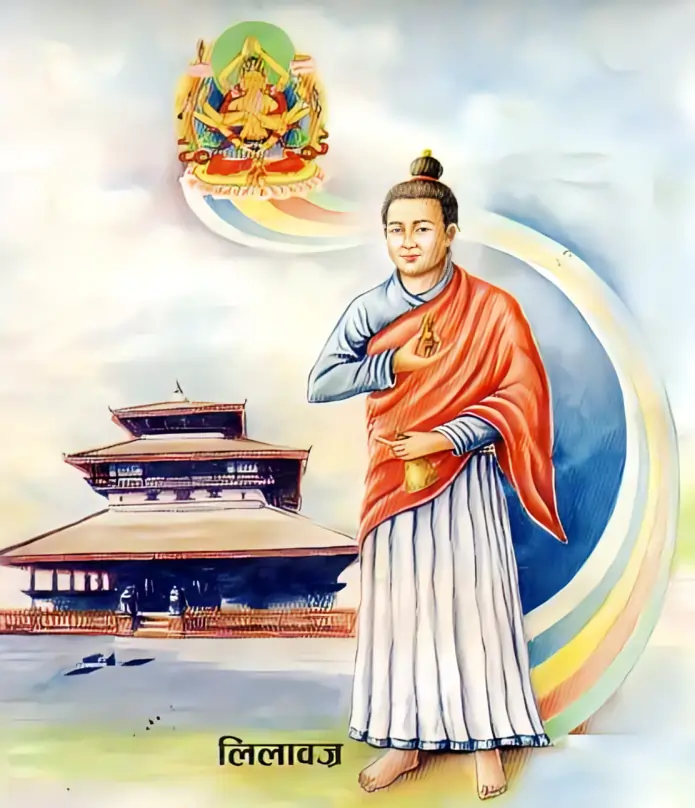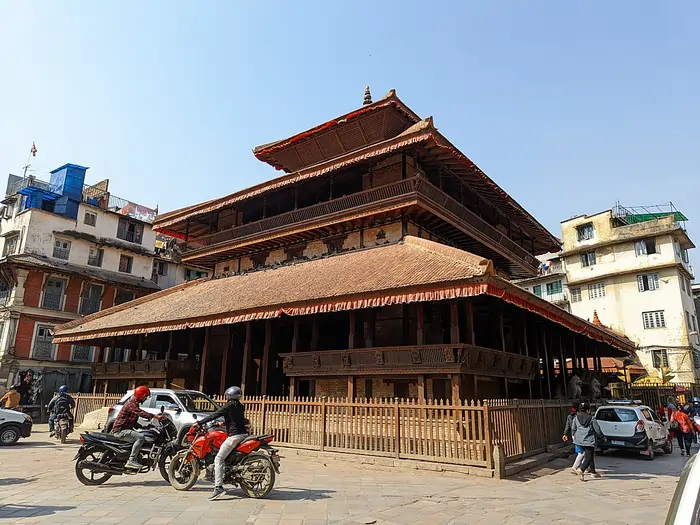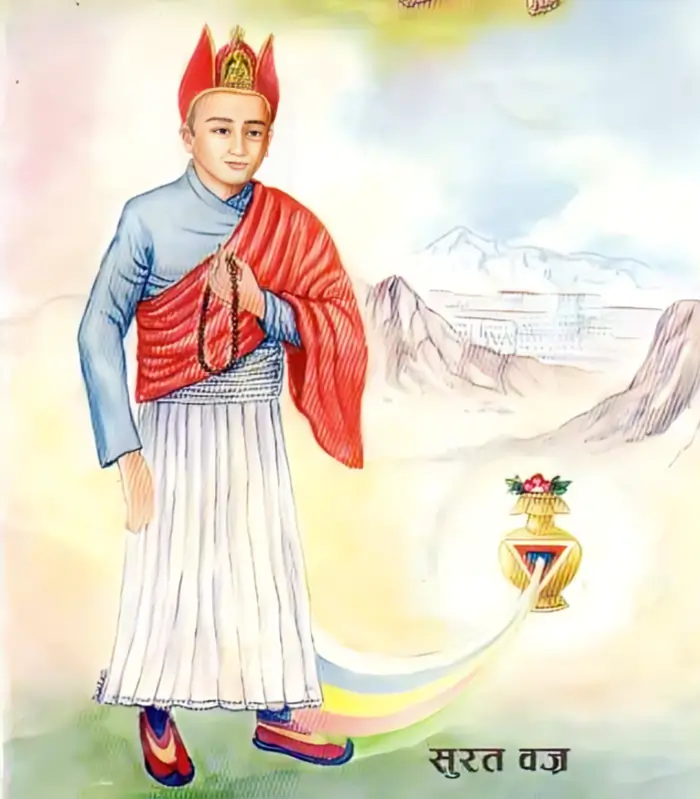Discovering Kathmandu’s Ancient Guardians: The Four Bajracharyas
In the heart of Kathmandu Valley, the Bajracharyas stand as pillars of the Newar community, embodying the profound teachings of Newar Buddhist Vajrayana traditions. Known as guru-ju or gu-bhaju, these married priests hold a revered status, echoing the Sanskrit term ‘guru’ for teacher or priest. The Bajracharyas, ranking highest among the Newar Buddhist castes, are guardians of ancient spiritual wisdom. The term ‘Bajracharya’ itself is a blend of ‘Vajra’, symbolizing the thunderbolt or diamond, and ‘Acharya’, meaning teacher, thus denoting a master of the Vajra Doctrine or Vajrayana Buddhism. This title is not merely a designation but a testament to their commitment to the welfare of all beings and the world.
This introductory exploration delves into the lives and legends of four such figures: Wak Bajra, Lila Bajra, Surat Bajra, and Manju Bajra Bajracharya, whose mystical deeds and profound meditations have left an indelible mark on the spiritual landscape of Kathmandu, making them the city’s legendary superheroes.
Wak Bajra Bajracharya: The Mystic Founder
In the rich historical tapestry of Nepal’s Licchavi Dynasty, the 5th Century saw the rise of a remarkable figure, Wak Bajra Bajracharya (वाक बज्र बज्राचार्य), also spelled as Vak Vajra Bajracharya. Not only did he establish the Kwa Bahal, Maitripur Mahavihar in Kathmandu, but he also became a revered expert in Vajrayana and Tantric practices. Wak Bajra’s most extraordinary feat, as per legend, was the translocation of the Si Gha Chaitya – also known as Sri Gha Chaitya – from Kashi (present-day India) to Kathmandu. This was achieved through his profound meditation and spiritual prowess. Today, the Si Gha Chaitya stands in Naghal, Kathmandu, near Thahity, as a testament to his mystical abilities. Moreover, Wak Bajra’s contribution to Buddhism extends beyond physical monuments; he enriched Buddhist literature with numerous scriptures, including the acclaimed Rakta Varna.

Wak Bajra Bajracharya’s dedication to spiritual practice was not just in his teachings and constructions but also in his personal journey of meditation. So deep and intense was his meditative state within the confines of Kwa Bahal, Maitripur Mahavihar, that it is believed he remains in a state of meditation to this day. This belief is so ingrained that his meditation room has been kept closed and untouched, serving as a sacred space of reverence and awe. His story, a blend of history and myth, continues to inspire and mystify, positioning him not only as a spiritual leader but also as an enduring symbol of devotion and transcendence in the heart of Kathmandu. His life and legends are a cornerstone of Nepal’s spiritual heritage, illustrating the profound impact one individual can have on the cultural and religious fabric of a nation. Read more…

Lila Bajra Bajracharya: The Architect
Lila Bajra Bajracharya (लीला बज्र बज्राचार्य), also spelled as Leela Vajra Bajracharya, a 7th Century figure during the reign of Lichhavi King Jaya Deva II, is an iconic name in Kathmandu’s history. Hailing from Shikhamu Bahal, Shreekhanda Tarumula Mahavihar in present-day Kathmandu, Nepal, he was a revered expert in Vajrayana and Tantric practices. His stature is further elevated by his recognition as one of the 84 Mahasiddhas, an elite group known for their mastery of tantric techniques. Lila Bajra’s most notable contribution is the construction of the Kasthamandap, a majestic wooden temple situated in the heart of Durbar Square in Kathmandu. This temple, built from a single tree, is so significant that the name of Nepal’s capital, Kathmandu, is derived from it. According to legend, Lila Bajra embarked on this ambitious project after challenging a Tree Deity, Brikcha Devata, who then miraculously grew the giant tree used to build the Kasthamandap.

Lila Bajra’s mystical journey culminates with an event shrouded in mystery and reverence. He entered the north-eastern agama, a sacred room within the inner sanctuary of Shikhamu Bahal’s monastery, and according to legends, never emerged. This room, one of the four agamas or chambers of worship in the monastery, became the eternal abode of Lila Bajra. The door through which he entered this spiritual retreat has remained forever sealed, a testament to his deep meditative state and spiritual significance. To this day, all pujas or ritual practices at this site are performed outside this closed door, honoring Lila Bajra’s everlasting presence and his profound impact on the spiritual landscape of Kathmandu. His legacy not only as a master builder but also as an eternal guardian and spiritual figure continues to inspire awe and devotion in the heart of Nepal.

Surat Bajra Bajracharya: The Telekinetic
In the vibrant history of the 16th Century Malla Dynasty, Surat Bajra Bajracharya (सुरत बज्र बज्राचार्य) stands out as a remarkable figure. Originating from Takse Bahal, Surat Shree Mahavihar in present-day Kathmandu – a monastery named in his honor – he was an eminent authority in Vajrayana and Tantric practices. A legend that vividly captures his mystical prowess recounts a visit to Lhasa, currently in Tibet. During a tea session with a respected Lama, Surat Bajra was seen discarding his tea onto the floor. Upon inquiry, he revealed a startling claim: his house in Kathmandu was ablaze, and through his actions, he was remotely extinguishing the fire. In a twist of fate, it was confirmed that his house indeed was on fire, but miraculously, a timely rainfall doused the flames, saving his home. This bewildering event led to a cascade of misunderstandings, culminating in the Lama spreading rumors of Surat Bajra’s demise.

Compelled by these rumors, Surat Bajra’s return to Kathmandu was met with shock and disbelief, as his family had already mourned his passing and conducted the ceremonial rites. Unable to reintegrate into his former life, Surat Bajra chose a path of solitude and introspection. He retreated to the Guheswari temple, dedicating himself to profound meditation, from which he never returned. This extraordinary narrative of Surat Bajra Bajracharya not only highlights the mystical elements prevalent in Vajrayana Buddhism but also reflects the profound impact of spiritual practice on an individual’s life journey. His story, woven with elements of the supernatural and deep spiritual devotion, continues to resonate as a testament to the enigmatic and transformative power of faith in the historical and cultural fabric of Kathmandu.
Manju Bajra Bajracharya: The Compassionate Healer
Manju Bajra Bajracharya (मञ्जु बज्र बज्राचार्य), also known as Jamana Gubhaju, was a revered figure of the 16th century during the Malla Dynasty in Kathmandu, Nepal. Residing in Musum Bahal, Manisingha Mahavihar, he was celebrated for his mastery of Vajrayana Buddhism and Tantric practices. Manju Bajra’s wisdom and humility earned him the role of a close advisor to King Pratap Malla, making him an influential spiritual and cultural figure. He was known for his profound ability to heal the sick and solve people’s problems, becoming a beacon of hope and guidance in his community. His empathetic nature was so profound that upon witnessing his wife burn her leg while cooking rice, he vowed never to eat rice again, earning him the nickname Jamana Gubhaju, meaning ‘the Priest that does not eat rice’ in the Newari language.

Manju Bajra’s life is adorned with intriguing stories that blur the lines between myth and reality. One such tale tells of him transforming into an eagle to outwit a deceitful magician, showcasing his extraordinary abilities. However, it is the mysterious circumstances of his end that captivate the most. Engrossed in deep meditation, he instructed his wife not to open the meditation chamber until his return. After days of silence, his concerned wife opened the door only to find that Manju Bajra had left his physical body. Conducting his death ceremonies in his absence, she was faced with a dilemma when his soul returned to find no body. This story has cemented Manju Bajra’s legacy in Kathmandu’s folklore, with many believing that his spirit still roams the city, protecting and aiding those in need. His life and mysterious end continue to be a source of fascination and reverence, symbolizing the enduring power of spirituality in Nepalese culture.
In Conclusion
Though only Lila Bajra is officially recognized among the 84 Mahasiddhas, Newari culture venerates all four Bajracharyas as Mahasiddhas, celebrating their extraordinary deeds and spiritual legacies in their respective Mahavihars to this day. Their stories, blending history with myth, continue to inspire and intrigue them, casting them as the legendary superheroes of Kathmandu Valley.
References
- The Four Pillars of Vajrayana of the Kathmandu Valley, Acharya Mahayogi Sridhar Rana Rinpoche
- Prasiddha Bajracharya, Badri Ratna Bajracharya, 1989
- The History of Ancient Nepal, D.B.Shrestha & C.B. Singh, 1972
- Newars and Tibetans in the Kathmandu Valley, Ethic Boundaries and Religious History, Todd T. Lewis, Columbia University, 1989
- Art of 4 Bajracharyas, Sarad Shakya, Shantipur Magazine Edition 3

